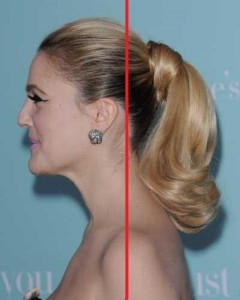 Forward head posture is an issue for almost everyone I work with to one degree or another.
Forward head posture is an issue for almost everyone I work with to one degree or another.
After more than a decade of working on my own posture, I line up very well when relaxed but my head is still slightly forward.
It is easy enough for me to pull my ears back in line with my shoulders but it is still a bit of work.
As I have written on numerous occasions my head and neck were always an issue before I got serious about changing my movement patterns and posture (getting Rolfed helped quite a bit as well).
Forward head posture can lead to many problems including chronic pain, headaches, numbness from nerve compression, and difficulty with breathing correctly.
Forward head posture happens for numerous reasons. In my world, I focus on the misalignment of the pelvis and the psoas major muscle as the main culprits for this condition, and the realignment of the pelvis and correct use of the psoas as the most important ingredients for correcting what can be a serious problem.
But many aspects of our modern life add to the problem of forward head posture such as the way we sit at a desk or computer, poorly designed car seats, sleeping or watching TV with too many pillows under our head, and/or a lack of muscle tone.
Changing these qualities, while imperative, isn’t enough if we don’t realign the pelvis and employ the psoas correctly.
The curve in the lumbar, or lower, spine is the key to our upright posture. We need the lumbar curve to hold the spine, rib cage, and head in the vertical plane.
 The above picture is a classic that has been floating around the internet for a while I have seen it used on many, many blog posts (including mine). It is a powerful and sobering image.
The above picture is a classic that has been floating around the internet for a while I have seen it used on many, many blog posts (including mine). It is a powerful and sobering image.
The head is very heavy—anywhere from eight to ten pounds. If it sits in the correct position atop the cervical spine you are holding up the actual weight of the head when standing.
The common wisdom holds that for every inch that your head moves forward of the spine it adds an extra ten pounds of weight for your neck to hold up.
The curves of the lumbar and cervical spine are meant to be the exact same degree and if you were to run a rod through a well-aligned spine it should pass directly through the middle of both curves.
This spinal arrangement which can’t really happen if your pelvis isn’t in a neutral position—or if your psoas isn’t free to do its thing—makes the load of the head that much easier to bear.
It is not a big leap to relate to the picture of the forward head with the lbs. of pressure labeled.
Improving our tendency towards forward head posture involves a major reshuffling of movement and standing patterns as well as figuring out the right muscles to balance and strengthen (posts about this coming soon).
For a start try to be aware of the position of your head over the course of the day today—when you are at the computer, or in the car or on the train.
Pay attention to how you hold your head. Change has to start with awareness.
***




